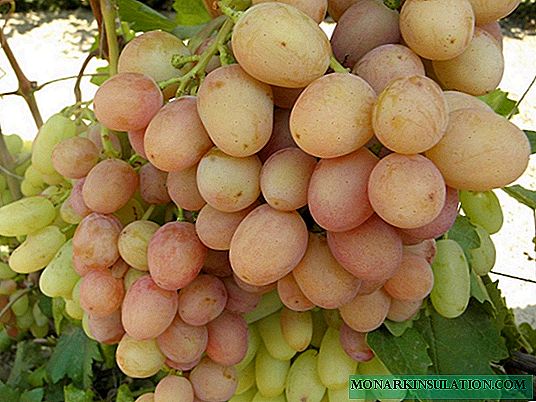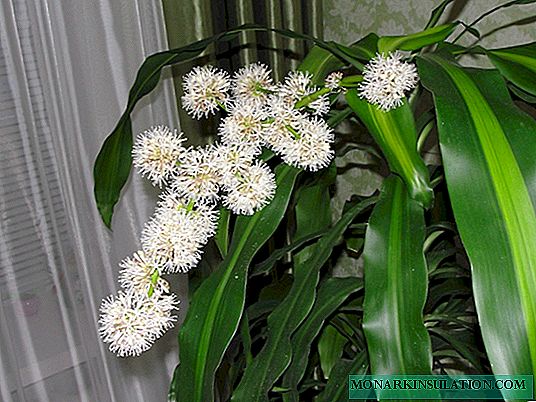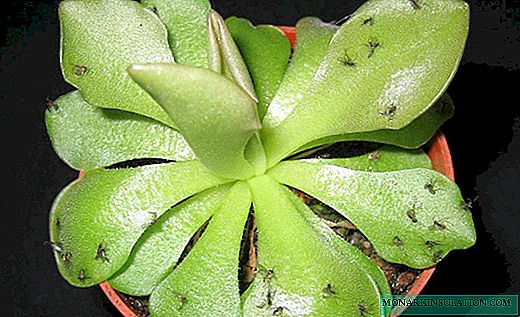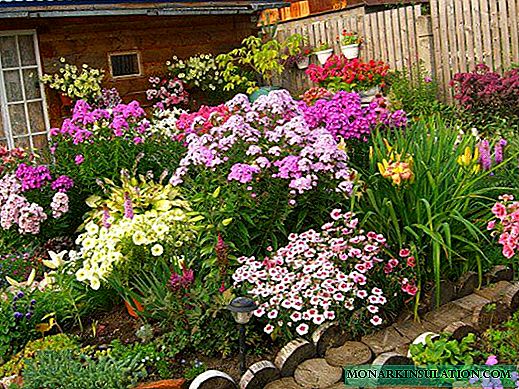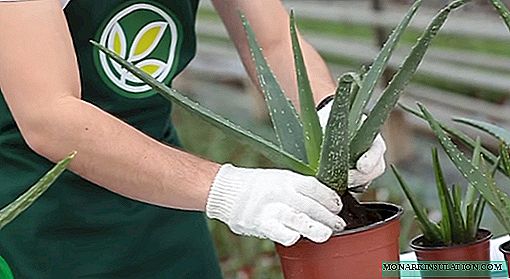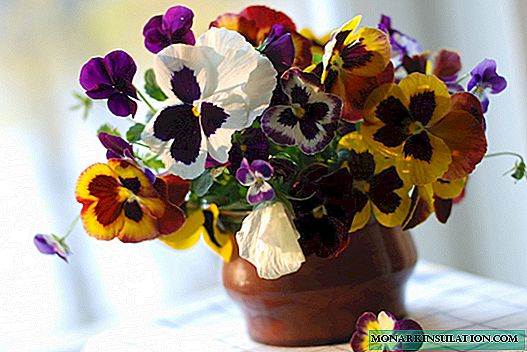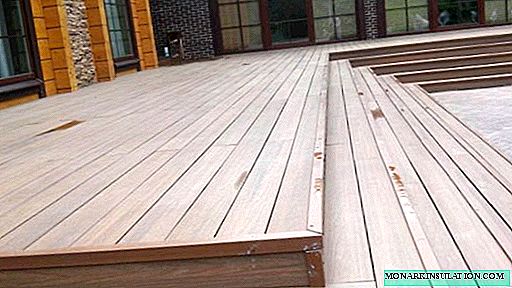
Parquet is a classic flooring, environmentally friendly, beautiful, expensive and of high quality. Although many new varieties of flooring have recently appeared, parquet flooring does not lose its relevance. He even left the interior, "going out" into nature. With the help of a special garden parquet, you can create magnificent terraces and rest places in the garden and in the yard, make wonderful paths, pool areas, open verandas that are not afraid of moisture.
Decking is also used to decorate water zones in landscape design - the contours of the pond, stream, miniature bridge will look aesthetically pleasing, walking on the parquet is pleasant and comfortable - its surface is warm and completely not afraid of moisture. Garden parquet is a square or rectangular tile, connected to each other using fasteners.
The very name of the terrace parquet is decking, associated with the water element. From American English, this translates as "deck." Decking has long been used on the terraces of American and Canadian homes. Today we can decorate our yard or porch with this beautiful practical material.

The design of the pool area with a terrace board. The water zone looks very attractive, and walking barefoot on the board is much more pleasant, because she is warm. Sun loungers with umbrellas will look great on such a platform.
Specifications of this material
The decking board is based on a wood-polymer composite, fixing additives, and polymer mixtures (can be either synthetic or organic). As a raw material for making decking, wood of Siberian larch, cedar and such exotic trees as kumaru, teak, azobe, mahogany and merbau, which is most resistant to decay, is used. Parquet from tropical wood is much more expensive.
WPC (or wood-polymer composite) is a mixture of wood flour and thermoplastic. It is a high strength, moisture resistant material with low thermal conductivity. The more wood flour in the mixture, the more the material resembles a tree. WPC is also called liquid wood for its similarity to natural wood and its ductility. The percentage of wood in the composite is large - from 60 to 80%.
In order for the owners of summer cottages to appreciate the new material, we will talk about its advantages.
- Ecological purity of the material, the absence of harmful additives and impurities.
- The ability to combine well with other materials - tiles, natural and artificial stone, gravel, pebbles.
- Such parquet can be used indoors, but its main purpose is to create a coating in the open air, the material does not allow moisture to collect on the surface, it is not slippery to walk on it.
- Laying garden parquet is simple, it does not require any special skills, so you will not need to spend money on the work of specialists.
- Durability and durability. Decking withstands daily temperature fluctuations up to 15 degrees, does not deteriorate at sub-zero temperatures, withstands heavy loads - up to 2 tons per sq.m.
- Easy to care. In order to clean the deck from contamination, you can use special tools or rinse it with a jet from a hose. The coating does not need additional protection - paint, varnish, etc.
Decking components are separate modules, it can be either a terrace board or a tile.
Terrace board or tile - what is right for you?
The terrace board can be smooth or have grooves on the surface for anti-slip effect and drainage of moisture. The second option is preferable. The length of the board is from 1.5 to 6 meters. There are two types of boards: with hard and soft modules. The soft-modular board has a plastic frame. Special frame mounts allow you to quickly and efficiently connect modules using self-tapping screws. After completion of work, the coating design looks solid, the fastening details are not visible. Boards of the rigid module are made of solid wood, resistant to moisture.
Decking is wood ideally suited for outdoor use. After heat treatment - dousing with heated steam without access to air, the tree acquires new properties - moisture is removed from it, it does not crack, does not dry out under the influence of sunlight, does not lose color, does not swell in high humidity, and becomes lighter.
But garden parquet is already a two-layer tile. The top layer is lamellas (decking face plates), the bottom layer is the backing frame (it can be wooden and plastic).
Features of the installation of garden parquet
As already mentioned, installing garden parquet is convenient and easy. Any surface is suitable for installation - soil, gravel, gravel, tile, wooden floor.

Installation of garden parquet on a base of gravel - a pre-aligned base, tiles are connected with fixtures in the manner of a designer. Variants of the pattern are possible - in this case, the alternation of horizontally and vertically arranged strips
It is not recommended to use a sand pillow as a base - the tile will sag, press into sand, which will lead to surface irregularities.

There are varieties of decking, which, like a board, are attached to the logs. This is a more practical option, such a site will be stronger, it can not be dismantled for the winter
If you have chosen soil as the basis, it must be cleaned of weeds, stones and covered with a geotextile, otherwise weeds will try to grow through the cracks between the tiles, which can lead to deformation of the coating. It is most convenient to mount garden parquet on a flat concrete base.
In general, for laying does not require any preliminary preparation of the base. The main thing is that the surface is flat and the differences are not more than 0.5 cm per square meter).

Laying parquet on a tile base is the easiest and most convenient option. On a perfectly flat base, the terrace will last longer. the load on the mounts is minimal
Each parquet module has locks that need to be interconnected. This is done quickly, so in a few minutes you can collect a square meter of such coverage. If you need to leave room for protrusions, pipes, parts of modules that interfere, you can simply cut it off with a saw.
The installation process is presented in detail on the video:
Technology of installation of a terrace board
Installation of a terrace board is done differently. The board is not fixed on the base, but on the support logs made of wood or plastic. Logs are laid on a flat base - tiles or other material.
The distance between the lags is 35-50cm. The longer the board, the greater the distance between the lags, the shorter the board - the less the distance.

Installation of a long terrace board on the logs. Under the lags there is a substrate for draining moisture. Many companies producing terrace boards complete sets with special substrate material
If you plan to use the coating in high humidity conditions, you need to put something solid under the logs, for example, ceramic tiles. This will provide drainage to excess moisture. Logs can be fixed on the base with self-tapping screws, if there is such a need.
We put the first board on the lags, align it along the edge of the lag. The board is attached to the lags in the groove with a self-tapping screw at an angle of 45 degrees.

The first board can be attached to the lag in two ways:
1) in the groove with a self-tapping screw
2) or a fixing clip also with a self-tapping screw
The clips are inserted into the grooves of the terrace board and on the lag, to the lags the clips are attached with self-tapping screws. The next board must be inserted into the clip with a groove - in this way the rest of the boards are mounted.

After you fix the clip to the lag with a self-tapping screw, you can attach the next one to the fixed board by inserting its groove. So continue to the end
To finish the terrace board around the perimeter, you can use stubs to hide the lateral grooves of the edge boards.
For more information about the installation process, see the video:
The terrace or the platform from the garden floor for the winter should be dismantled if it is not laid on the logs in the open. The area from the terrace board laid on the logs can be covered with a film, and if it is located under a canopy, winter is not at all frightening to it.

From a terrace board you can make a simple platform, as well as a relaxation area with several levels. To create such a zone, you need a specialist, but such a mini-cafe will allow you to gather with friends and celebrate holidays in your open-air garden
In case of dismantling, the tile will need to be cleaned of dust, dirt, dried and a dry place should be selected for its storage until warm, when you can again enjoy your vacation in an open area.

